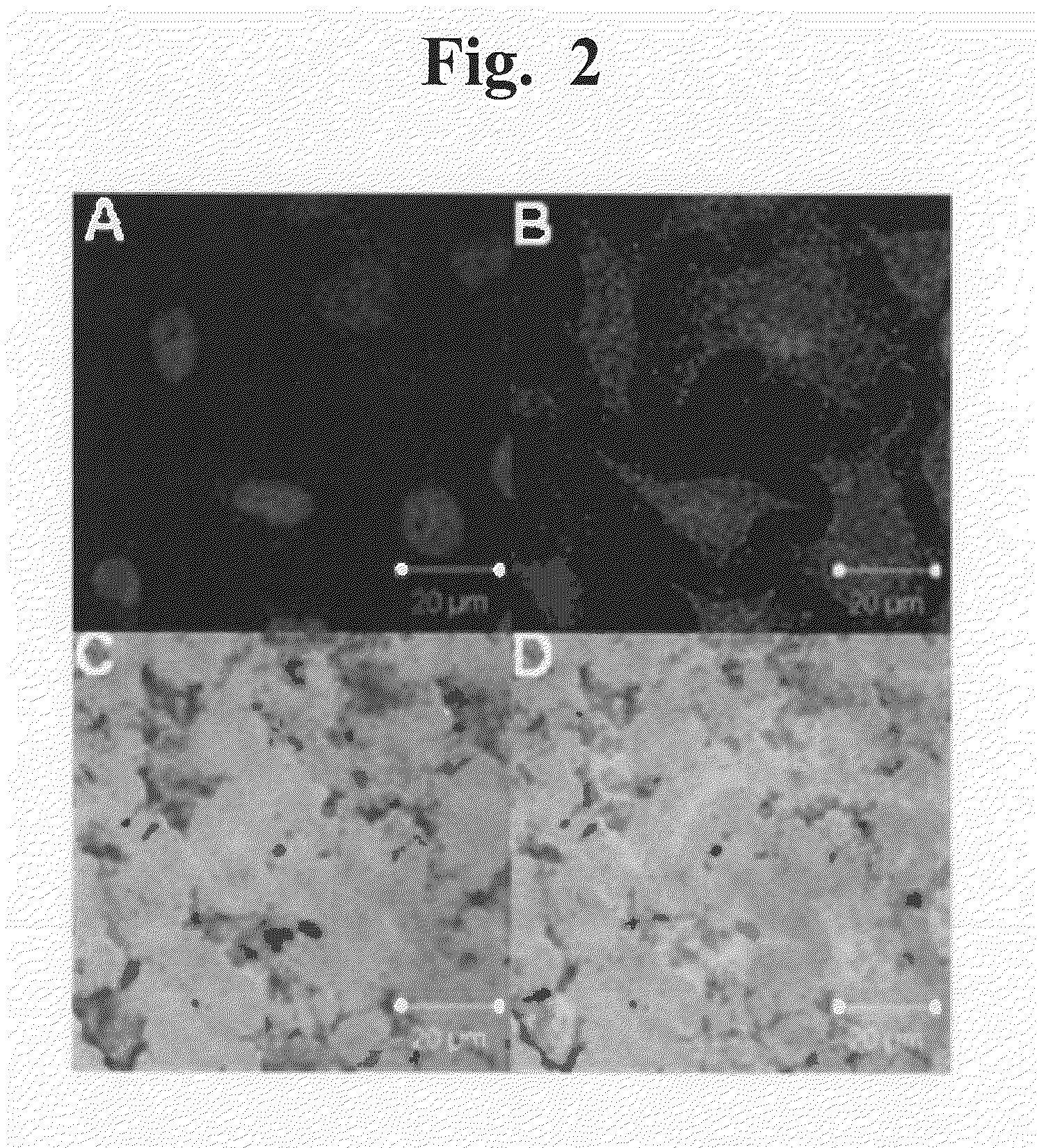Nanoparticle-Based Gene Delivery Systems
- Summary
- Abstract
- Description
- Claims
- Application Information
AI Technical Summary
Benefits of technology
Problems solved by technology
Method used
Image
Examples
example 1
Preparation of AuNP GDS-Mcl-1L-AS Conjugates
[0095]We describe the development of a gene delivery system showing the use of single-stranded DNA functionalized gold nanoparticles (henceforth referred to as “gold nanoparticle gene delivery system (AuNP GDS)”) as a general platform for loading and delivering antisense DNA specific to any gene of interest.
[0096]To prepare single-stranded DNA functionalized gold nanoparticles as AuNP GDS, we used an oligonucleotide (5′-CTCGACGTGCGACGGCAG-3′) bearing a sequence complementary to the coding region (bases 1198 to 1215; 5′-GAGCTGCACGCTGCCGTC-3′) of EGFP (anti-EGFP oligo) because it has been shown to be effective in the delivery and silencing the expression of EGFP in human tissue cultures without interfering with expression of human genes other than egfp.9 AuNP GDS was prepared by functionalizing 13 nm gold nanoparticle with the thiolated anti-EGFP oligo.10 To test whether the AuNP GDS can be used as a gene delivery system, anti-EGFP oligo-fun...
example 2
Verification for Knockdown of Target Gene Expression
[0098]Next, we tested the ability of the antisense oligo to knock-down the target gene expression. The AuNP GDS-Mcl-1L-AS conjugates were applied to the HeLa cells, protein samples were prepared from the cultures 24 hrs after transfection for quantitative analysis of MCL-1L using western blot analyses. As shown in FIG. 3, AuNP GDS-Mcl-1L-AS conjugates efficiently knockdowned the MCL-1L expression in a manner dependent on MCL-1L antisense concentrations. When 0.1 μM Mcl-1L AS was delivered into the cells using a liposome-based reagent (Lipofectamine 2000, Invitrogen), the knockdown efficiency was lower than AuNP GDS (9.8% vs. 19.5%), indicating that the AuNP GDS system is more efficient in delivering antisense DNA than the liposome-based reagent.
example 3
AuNP GDS as Gene Delivery System
[0099]To investigate the ability of AuNP GDS as a general gene delivery system, we further tested another human cell line (HEK 293T, human embryonic kidney 293T; Korean Cell Line Bank) as well as two additional antisense DNAs which targeted a gene.
[0100]293T (4.5×105) or HeLa cells (3.0×105) were incubated with antisense oligo functionalized with gold-nanoparticle in 6-well dishes. Cell lysates were prepared in NP-40 lysis buffer (50 mM Tris-HCl, pH 8.0, 0.15 M NaCl, and 1% NP-40) containing 10% protease inhibitor cocktail (Sigma). For quantitative protein analysis, a standard curve was established with the standard BSA solution (Pierce, Rockford, Ill., USA), and cell lysates containing equal amount of total protein were subjected to sodium dodecyl sulfate-polyacrylamide gel electrophoresis (SDS-PAGE). Separated proteins were transferred onto nitrocellulose membrane and Western blot analyses were performed. Anti-MCL-1L and anti-p53 monoclonal antibodi...
PUM
| Property | Measurement | Unit |
|---|---|---|
| Size | aaaaa | aaaaa |
| Length | aaaaa | aaaaa |
Abstract
Description
Claims
Application Information
 Login to View More
Login to View More - R&D
- Intellectual Property
- Life Sciences
- Materials
- Tech Scout
- Unparalleled Data Quality
- Higher Quality Content
- 60% Fewer Hallucinations
Browse by: Latest US Patents, China's latest patents, Technical Efficacy Thesaurus, Application Domain, Technology Topic, Popular Technical Reports.
© 2025 PatSnap. All rights reserved.Legal|Privacy policy|Modern Slavery Act Transparency Statement|Sitemap|About US| Contact US: help@patsnap.com



